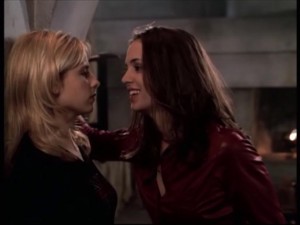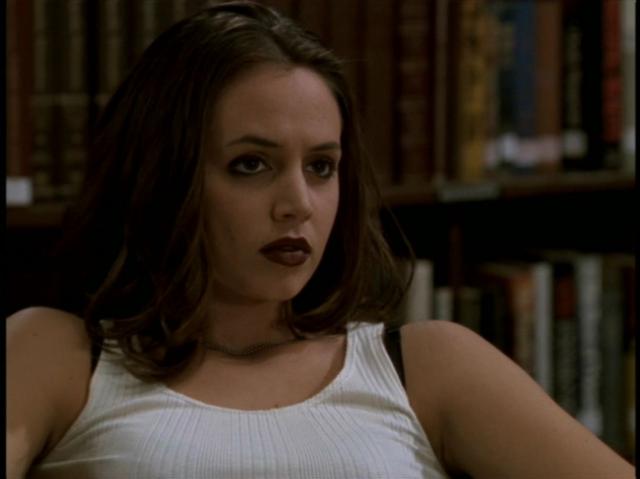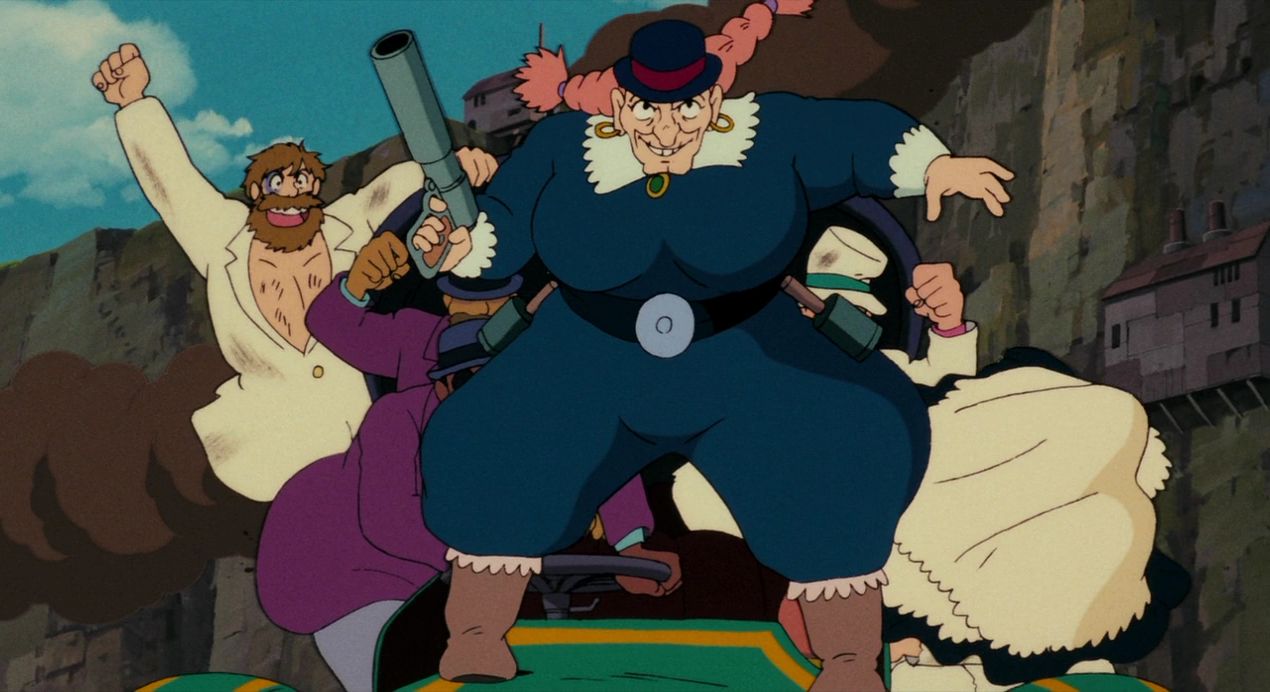 Joss Whedon’s Buffy: the Vampire Slayer deals with real issues in extraordinary circumstances, making it easier for audiences to internalize the issues and deal with them in their own ways. What this also does for the creators of the show is to make it easier to approach more controversial issues such as sexuality, from the burgeoning sexuality of high school students to relationships between adults (and between humans and vampires).
Joss Whedon’s Buffy: the Vampire Slayer deals with real issues in extraordinary circumstances, making it easier for audiences to internalize the issues and deal with them in their own ways. What this also does for the creators of the show is to make it easier to approach more controversial issues such as sexuality, from the burgeoning sexuality of high school students to relationships between adults (and between humans and vampires).
One point of interest throughout the seasons is the sexuality of the third Slayer Faith Lehane, called up after the murder of Kendra (side note on Slayers: when a Slayer is killed, the next in line is called up. When the Master drowned Buffy in Season 1, Kendra was called up, becoming the Slayer. After Kendra’s murder at the hand of Drusilla, Faith was the next in line). A girl from Boston with no real roots in any particular place, Faith Lehane shows up in Season 3, Buffy’s last year in high school, causing some tension within the Scooby Gang as Buffy worries about her place as the Slayer what with a new, pretty, fearless second Slayer.
Within the Buffy fanbase, there is a lot of speculation about the relationship between Buffy and Faith based on episodes like “Bad Girls,” despite there never being a resolution or confession of feelings by either party. According to the actress Eliza Dushku in a convention panel, she considered Faith to “swing both ways,” and that “she had a definite… thing for Buffy.”
On the flip side, the show demonstrates sexuality in a very different way in terms of Willow Rosenburg, who goes through four major relationship during the course of the show, two of which are with women (see my earlier article on Willow). What is troublesome about this representation is that after she begins a relationship with Tara, Willow refers to herself as “gay now” on more than one occasion. The reason that this is problematic is that it ignores the two previous relationships that Willow had with men, both of which were emotionally and physically strong.
One possible reason for this representation is that there is a certain stigma about bisexuality that was okay for Faith of the Questionable Morals, but not okay for one of the Scooby Gang. Faith is set apart from other characters in Buffy because she grew up removed from the middle-class lifestyle in which the rest of the Scooby Gang was raised; she’s brash, she fights, and she does a good job of acting like she doesn’t give a shit about anything. She’s promiscuous, and not in the joking way Cordelia is portrayed as through her stint in Sunnydale (Faith deflowers the veritable good guy Xander).
Faith’s lifestyle is at odds with her Slayerhood and makes it difficult for her to become fully integrated into the Scooby Gang, one of the reasons that she eventually betrays Buffy. The secret jealousy that colors the relationship between Faith and Buffy also lends itself to the idea that Faith has feelings for Buffy, a result of her envy and adoration of the young woman.
So this brings up two questions: why isn’t it okay to have a bisexual character, and why is it Faith who would be the possibility for bisexuality? The show clearly shows the development of Willow’s character through her first two relationships, both with men, into her first relationship with a woman in season four. It was a groundbreaking relationship on television as a positive and realistic representation of a lesbian relationship. However, the use of the phrase “gay now,” used more than once in the later seasons, detracts from the development of Willow through her relationships over the course of show. What does this mean as a media product of the late 1990’s?
One thing we can take away is that bisexuality was a little more difficult for mainstream media to tolerate than out-and-out homosexuality, which may be true now. Willow never goes back to dating men and refers to herself as gay, despite a deep, serious connection to both Oz and Xander in her high school and early college years. These relationships and their effect on Willow’s character development make less of an impact because she disregards them.
On the other hand, we have Faith, considered by many an audience member a “slut” and kind of crazy. She’s not one of the golden few in the Scooby Gang. She’s a character that belongs in counter-culture rather than the tanned cheerleader Buffy or the typically nerdy Willow. For the time, bisexuality would fall under a subculture that was a much different place than the characters on Buffy were used to despite their own dealings with demons.
Faith is one of the typical “misunderstood” characters that are a lot more interesting once you get past the surface stuff. Her secret need for acceptance and approval at odds with her outward attitude; one of her major internal conflicts are her desires to both be better than Buffy and to be loved by Buffy, whether that’s romantically or in the way that she never was loved by a family member.
Christina Casano is a TV & Film Writer at Girls in Capes and studies Theatre and Mass Communication at Miami University in Ohio. She is the resident expert onBuffy the Vampire Slayer.







Interesting article! I have to admit, I’ve never given much thought to the possibility that Faith was into Buffy.
But as far as Willow… her relationship with Oz does throw a wrench in the whole lesbian thing but I don’t think the same can really be said for Xander. It could be argued that they just misread the strong connection they had as friends. I mean, who didn’t make some questionable dating choices in high school? But even her relationship with Oz, strong as it was, was hurt by her regrettable romantic fling with Xander. Maybe, feeling that something wasn’t quite right, it was subconscious sabotage on her part. Also, those are the only two males (I hesitate to use the term “man” in reference to high school Xander, haha) in her romantic life. With the show over and the Scooby Gang’s story continuing in comic form, Willow has still never gone back to men.
Go back and watch the episodes that have a ton of short little shots of Willow and Xander secretly playing footise or making out behind bookcases and such between the bigger scenes. That’s definitely not “misread friendship” on their faces.